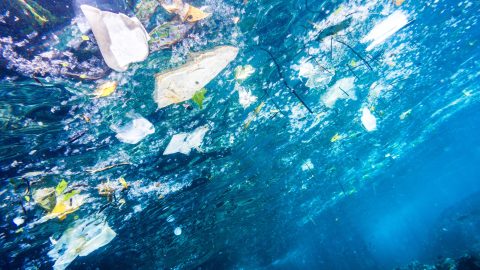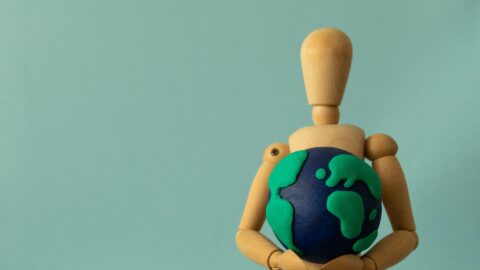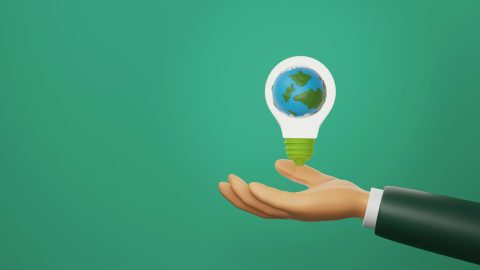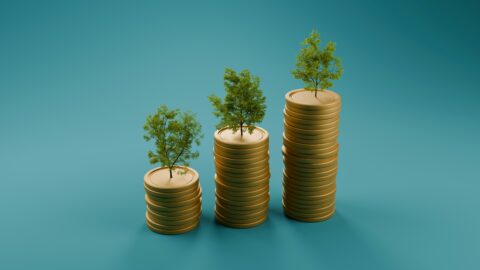Mr. McGuire: I just want to say one word to you. Just one word.
Benjamin: Yes, sir.
Mr. McGuire: Are you listening?
Benjamin: Yes, I am.
Mr. McGuire: Plastics.
Benjamin: Exactly how do you mean?
Mr. McGuire: There’s a great future in plastics. Think about it. Will you think about it?
The Graduate is a US film classic of the 1960s. The bored Mrs. Robinson seduces the college graduate Benjamin. In one scene, one of the protagonists of the movie, Mr. McGuire, explains the future to the main character, Benjamin: plastic. Back then, in the mid-1960s, “plastic” was a new raw material that promised previously unimaginable opportunities. Since the 1960s, plastic production has increased from about 2 million tonnes per year to about 322 million tonnes. This means that plastic production has increased three times faster than the US GDP – there was indeed a great future in plastics!
One of the big advantages of plastic as raw material is at the same time one of its biggest drawbacks from an ESG perspective. Plastic can assume almost any shape and is very durable – at the expense of the global oceans. “Any shape” means that we are not only talking about large parts that can be easily collected, but also about small parts (especially in the form of packaging material, which the largest part of global plastic production is used for) and particles. For example, think of peelings or toothpastes that contain so-called microplastics so as to produce friction.
Durable means that plastic does not simply disappear, but it remains in existence for many, many years. Waiting this one out is therefore not a solution. This prompts the question of how to handle plastic. Of the 6.3bn tonnes of plastic that have been produced since the 1950s, about 9% has been recycled and 12% has been burnt. This means that almost four fifths of all the plastic ever produced still exist. This translates into a landfill the size of Manhattan.
Onto our plates via detour
Not that much really, one might think! If only it were that simple. A large part of the plastic does not end up in managed landfills, but anywhere. And on our planet, “anywhere” usually means in the sea. As a result of light and decomposition, plastic is broken down and ends up in marine animals and thus, via detour, in our stomachs. Something similar is true on land, by the way, where traces of plastic can sometimes be found in honey.
Nowadays it is impossible to think of a life without plastic in many of its different forms of manifestation. For example, just think of disposable gloves in the operating theatre, insulation material in residential building, or condoms. How to handle plastic in a responsible way, then? Different strategies will be necessary. In some cases, we will have to find a substitute for plastic, or indeed avoid it altogether; that includes bans, taxes, and other statutory interventions. In other cases, recycling will be the way to go. One approach will be to deposit plastic waste at designated landfills rather than discard of it anywhere and without control. Another approach may call for the involvement of nature as part of the solution. For example, plastic-eating microbes are a case in point (N.B. these do not only exist as genetically engineered organisms.)
We all have to contribute to a comprehensive and meaningful strategy as far as the handling of plastic is concerned. “We all”, that means the community of states, companies, and consumers. According to a study by Helmholtz Institut, of the 10mn tonnes of plastic that end up in the sea every year, about 90% find their way there via only ten rivers. Eight of them are located in Asia, and two in Africa. This means that plastic waste is not the least a problem of emerging economies. This also explains why so many different countries like Rwanda, France, Kenya, and Bangladesh have banned plastic carrier bags. Companies increasingly regard the waste they create through their products as part of their corporate responsibility. For example, the giant groups in the consumer goods sector that have started (often under public pressure) to develop far-reaching strategies to avoid waste across all the aforementioned areas.
This ESG Letter is meant to provide you with an overview of the kind of ESG problems that are associated with plastic and of the ways we deal with these problems as sustainable investors. We are convinced that companies have to – and can – contribute significantly to solving the plastics problem. The objective of our ESG Letter is to analyse how, and how well, some companies are already doing that.

Mag. Gerold Permoser
*ESG stands for Environmental, Social and Governance“ – These are the three broad categories according to which companies are examined in sustainable investment.
Legal disclaimer
This document is an advertisement. Unless indicated otherwise, source: Erste Asset Management GmbH. The language of communication of the sales offices is German and the languages of communication of the Management Company also include English.
The prospectus for UCITS funds (including any amendments) is prepared and published in accordance with the provisions of the InvFG 2011 as amended. Information for Investors pursuant to § 21 AIFMG is prepared for the alternative investment funds (AIF) administered by Erste Asset Management GmbH pursuant to the provisions of the AIFMG in conjunction with the InvFG 2011.
The currently valid versions of the prospectus, the Information for Investors pursuant to § 21 AIFMG, and the key information document can be found on the website www.erste-am.com under “Mandatory publications” and can be obtained free of charge by interested investors at the offices of the Management Company and at the offices of the depositary bank. The exact date of the most recent publication of the prospectus, the languages in which the fund prospectus or the Information for Investors pursuant to Art 21 AIFMG and the key information document are available, and any other locations where the documents can be obtained are indicated on the website www.erste-am.com. A summary of the investor rights is available in German and English on the website www.erste-am.com/investor-rights and can also be obtained from the Management Company.
The Management Company can decide to suspend the provisions it has taken for the sale of unit certificates in other countries in accordance with the regulatory requirements.
Note: You are about to purchase a product that may be difficult to understand. We recommend that you read the indicated fund documents before making an investment decision. In addition to the locations listed above, you can obtain these documents free of charge at the offices of the referring Sparkassen bank and the offices of Erste Bank der oesterreichischen Sparkassen AG. You can also access these documents electronically at www.erste-am.com.
Our analyses and conclusions are general in nature and do not take into account the individual characteristics of our investors in terms of earnings, taxation, experience and knowledge, investment objective, financial position, capacity for loss, and risk tolerance. Past performance is not a reliable indicator of the future performance of a fund.
Please note: Investments in securities entail risks in addition to the opportunities presented here. The value of units and their earnings can rise and fall. Changes in exchange rates can also have a positive or negative effect on the value of an investment. For this reason, you may receive less than your originally invested amount when you redeem your units. Persons who are interested in purchasing units in investment funds are advised to read the current fund prospectus(es) and the Information for Investors pursuant to § 21 AIFMG, especially the risk notices they contain, before making an investment decision. If the fund currency is different than the investor’s home currency, changes in the relevant exchange rate can positively or negatively influence the value of the investment and the amount of the costs associated with the fund in the home currency.
We are not permitted to directly or indirectly offer, sell, transfer, or deliver this financial product to natural or legal persons whose place of residence or domicile is located in a country where this is legally prohibited. In this case, we may not provide any product information, either.
Please consult the corresponding information in the fund prospectus and the Information for Investors pursuant to § 21 AIFMG for restrictions on the sale of the fund to American or Russian citizens.
It is expressly noted that this communication does not provide any investment recommendations, but only expresses our current market assessment. Thus, this communication is not a substitute for investment advice.
This document does not represent a sales activity of the Management Company and therefore may not be construed as an offer for the purchase or sale of financial or investment instruments.
Erste Asset Management GmbH is affiliated with the Erste Bank and austrian Sparkassen banks.
Please also read the “Information about us and our securities services” published by your bank.



